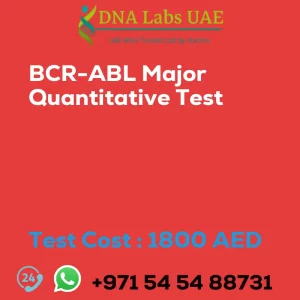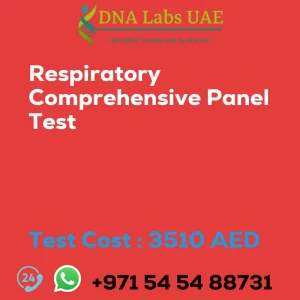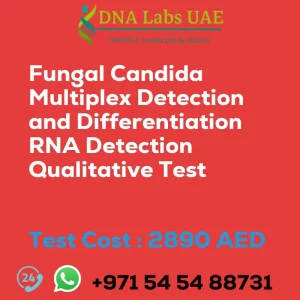Peridontal Multiplex Detection and Differentiation Porphyromonas gulae Treponema denticola tannerella forsythia and Fusobacterium nucleatum RNA Detection Qualitative Test
Test Name: Peridontal Multiplex Detection and Differentiation Porphyromonas gulae Treponema denticola tannerella forsythia and Fusobacterium nucleatum RNA Detection Qualitative Test
Components: Price 2210.0 AED
Sample Condition: Saliva, scrap from deep of the tooth, inflamed gum, plaque, etc.
Report Delivery: 4th Working Day Email: 48 hours. On phone: 36 hours
Method: Real Time RT-PCR
Test type: Viral
Doctor: Physician
Test Department: Genetics
Pre Test Information: Need to sign Consent document and bring any clinical history of patient for Peridontal Multiplex Detection & Differentiation (Porphyromonas gulae, Treponema denticola, tannerella forsythia & Fusobacterium nucleatum) (RNA Detection) Qualitative Test
Test Details:
The Peridontal Multiplex Detection & Differentiation (RNA Detection) Qualitative Test is a diagnostic tool used to identify and differentiate the presence of four specific bacteria in the oral cavity associated with periodontal disease. These bacteria include Porphyromonas gulae, Treponema denticola, Tannerella forsythia, and Fusobacterium nucleatum. The test utilizes RNA detection techniques to detect the genetic material of these bacteria in a patient’s saliva or oral swab sample. RNA detection is a sensitive method that allows for the identification of active bacterial infections. The test provides qualitative results, meaning it can determine whether the bacteria are present or not. It does not provide quantitative information about the bacterial load or the severity of the infection. Early detection of these bacteria can help in the timely treatment and management of periodontal disease. By identifying the specific bacteria causing the infection, dentists can tailor the treatment plan to target these pathogens more effectively. Overall, the Peridontal Multiplex Detection & Differentiation (RNA Detection) Qualitative Test is a valuable tool for diagnosing periodontal disease and determining the specific bacterial species involved in the infection.
| Test Name | Peridontal Multiplex Detection and Differentiation Porphyromonas gulae Treponema denticola tannerella forsythia and Fusobacterium nucleatum RNA Detection Qualitative Test |
|---|---|
| Components | |
| Price | 2210.0 AED |
| Sample Condition | Saliva, scrap from deep of the tooth, inflamed gum, plaque, etc. |
| Report Delivery | 4th Working Day Email : 48 hours.On phone : 36 hours |
| Method | Real Time RT- PCR |
| Test type | Viral |
| Doctor | Physician |
| Test Department: | Genetics |
| Pre Test Information | Need to sign Consent document and bring any clinical history of patient forPeridontalMultiplex Detection & Differentiation (Porphyromonas gulae, Treponema denticola, tannerella forsythia & Fusobacterium nucleatum) (RNA Detection) QualitativeTest |
| Test Details |
The Peridontal Multiplex Detection & Differentiation (RNA Detection) Qualitative Test is a diagnostic tool used to identify and differentiate the presence of four specific bacteria in the oral cavity associated with periodontal disease. These bacteria include Porphyromonas gulae, Treponema denticola, Tannerella forsythia, and Fusobacterium nucleatum. The test utilizes RNA detection techniques to detect the genetic material of these bacteria in a patient’s saliva or oral swab sample. RNA detection is a sensitive method that allows for the identification of active bacterial infections. The test provides qualitative results, meaning it can determine whether the bacteria are present or not. It does not provide quantitative information about the bacterial load or the severity of the infection. Early detection of these bacteria can help in the timely treatment and management of periodontal disease. By identifying the specific bacteria causing the infection, dentists can tailor the treatment plan to target these pathogens more effectively. Overall, the Peridontal Multiplex Detection & Differentiation (RNA Detection) Qualitative Test is a valuable tool for diagnosing periodontal disease and determining the specific bacterial species involved in the infection. |








